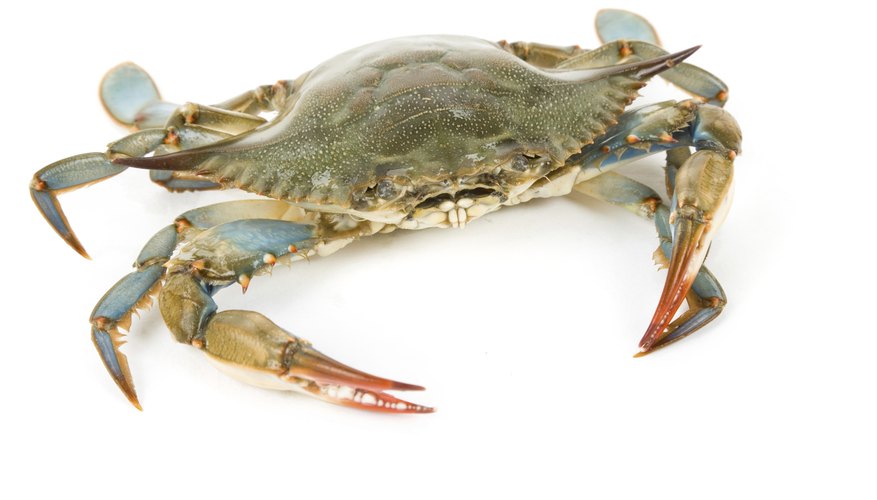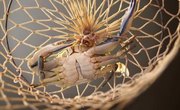
Items you will need
Bucket
Algae
Blue crab fishing in the U.S. often occurs off of the Chesapeake Bay. They are a delicacy in the United States and many blue crab suppliers receive their hatch from Chesapeake fisheries. Chesapeake Bay scientists report that a drop in blue crab catches began to occur in the early 1990s. This drop makes fishing for wild blue crabs challenging for crabbers, so many of them have turned to farm-raising. Farm-raised crabs harvest in freshwater and taste identical to ocean crabs.
Crabs reproduce at a slower rate during winter months.
Catch ocean crabs that are small and not fully mature. Gather a large number of crabs to ensure that you have an abundance of both male and female specimens.
Load your crabs into a freshwater pond. According to Science Daily, freshwater ponds are best for raising blue crabs because the habitat structure will support their growth.
Pour a large bucket of algae into the pond daily for crabs to feed on. Collect the algae from the ocean, lakes, springs or rivers. Monitor the pond for signs that the algae is starting to cultivate on its own.
Remove the crabs as they start to reach maturity. According to researchers at North Carolina State University, small crabs take approximately 105 days to fully mature.
Tips
References
Resources
Writer Bio
Before starting her writing career, Tanya Brown worked as an eighth-grade language arts teacher. She also has a background in nursing, with extensive experience in urology, neurology and neurosurgery clinics. Brown holds a bachelor's degree in psychology and is pursuing her master’s degree in educational psychology.



